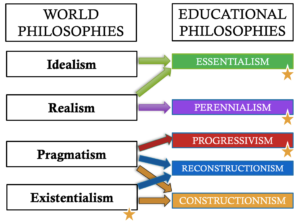Who can Mark my Word? Philosophy of Education
QUESTION
Which one of the following was not part of the Recommendations of the Kamunge Commission?
A. that the concepts and practices of the Nyayo philosophy be incorporated in national curricula
B. that the Harambee spirit concept for development be part of goals of education
C. that the concepts and practices of the Harambee spirit be taught at all levels of education
D. that the Nyayo philosophy as foundations for development should be part of national education.
Answers
The Kamunge Commission, officially known as the National Commission on Educational Objectives and Policies, was established in Kenya in 1988 to review the education system. Its recommendations included integrating the Nyayo philosophy and the Harambee spirit into the national curriculum. Therefore, the option that was not part of the Recommendations of the Kamunge Commission is:
D. that the Nyayo philosophy as foundations for development should be part of national education.
QUESTION
Which one of the following is not a branch of metaphysics?
A. Cosmetology
B. Ontology
C. epistemology
D. Theology
Answers
The branch of metaphysics deals with fundamental questions about the nature of reality, existence, and being. Among the options provided, “Cosmetology” does not belong to metaphysics; it is the study of cosmetics and beauty treatments. Therefore, the correct answer is:
A. Cosmetology
QUESTION
Assuming that your Teaching Practice supervisor asks you to use methods of teaching children recommended by naturalism. Which one of the following would you adopt?
A. Discussion.
B. Experimentation method.
C. Problem solving method
D. Story telling.
Answers
Naturalism in education emphasizes the importance of experiential learning and hands-on activities to allow children to learn through direct interaction with their environment. Among the options provided, the method most aligned with naturalism is:
B. Experimentation method.
This method encourages students to explore and learn through practical experimentation and observation, which aligns with the principles of naturalism.
QUESTION
Which one of the following is not a Characteristic of Idealism?
A. our minds are part of the mind
B. The prime aim of man is to achieve the spiritual values.
C. The reality and not really knowledge is in the mind
D. values are absolute unchanging.
Answers
The characteristic that does not align with Idealism is:
C. The reality and not really knowledge is in the mind.
Idealism posits that reality exists within the realm of ideas or consciousness rather than being solely dependent on external realities. Therefore, the statement contradicting this idea would be the characteristic of Idealism that is not accurate.
QUESTION
Kenya‟s philosophy of education recommends that the system of education should focus on a number of aims. Which one of the following is not one of the recommendations?
A. Develop an independent individual.
B. prepare and re-orientate the youth
C. Inculcate values.
D. Remove social injustice
Answers
The philosophy of education in Kenya recommends various aims for the education system. Among the options provided, the one that is not typically emphasized in the recommendations is:
D. Remove social injustice.
While addressing social injustices might be a desired outcome of education, it’s not typically listed as a specific aim within the educational philosophy. The other options, such as developing an independent individual, preparing and re-orientating the youth, and inculcating values, are commonly emphasized aims in educational philosophy in Kenya.
QUESTION
Which one of the following is an aim of Education according to Idealism?
A. Preparation for a holy life
B. Cultivation of immoral value
C. Development of individuality
D. To produce socially efficient persons
Answers
An aim of education according to Idealism is:
A. Preparation for a holy life.
Idealism places a strong emphasis on the spiritual and moral development of individuals, aiming to prepare them for a life guided by higher principles and ideals. Therefore, the option “Preparation for a holy life” aligns with the aims of education according to Idealism.
QUESTION
Which one of the following best defines a curriculum?
A. A plan for action that is a plan which guides instruction
B. An organized set of informal educational or training
C. A plan for providing sets of learning opportunities for the educated
D. All activities and experiences that we plan and organize for children within a school
Answers
The best definition of a curriculum is:
C. A plan for providing sets of learning opportunities for the educated.
A curriculum outlines the structure and content of what students will learn in an educational program, including objectives, content, instructional methods, and assessment strategies. This definition encompasses the core idea of a curriculum as a framework for delivering educational experiences to learners.
QUESTION
Which one of the following best defines education
A. None of the these options
B. development of all individual capacities which will enable one to control the environment and fulfill his/her destiny
C. process by which material, mental, and cultural inheritance of a teacher is transmitted to generations
D. process of dispensing desirable knowledge, skills and attitudes among peers
Answers
The best definition of education among the options provided is:
B. development of all individual capacities which will enable one to control the environment and fulfill his/her destiny.
This definition captures the broad scope of education, encompassing the development of various capacities and abilities that empower individuals to navigate and shape their lives and environments.
QUESTION
Which one of the following is a common role of both parents and teachers in socialization of children
A. Model for children.
B. Provide group activities.
C. Understand the culture of the child.
D. Provide enough materials
Answers
A common role of both parents and teachers in the socialization of children is:
A. Model for children.
Both parents and teachers serve as role models for children, demonstrating behaviors, values, and attitudes that children observe and often emulate. This modeling plays a crucial role in shaping children’s socialization and development.
QUESTION
Which one of the following odes not qualify to describe the meaning of socialization?
A. process by which children learn the ways of their society and make the ways p art of their personality.
B. None of the options .
C. the process by which an individual learns the behaviors, values and expectations of others that enable him to play his/her roles in society
D. process by which an individual is adapted to his social environment and becomes a recognized, cooperating and efficient member of society
Answers
The option that does not qualify to describe the meaning of socialization is:
B. None of the options.
This option does not provide a specific definition or description of socialization. The other options all offer different perspectives on the meaning of socialization, but “None of the options” does not contribute to defining the concept.
QUESTION
Which one of the following is not a social aim of education?
A. To socialize an individual.
B. None of these options
C. National integration
D. To produce useful citizens
Answers
The option that is not a social aim of education is:
B. None of these options.
This option indicates that all other options are social aims of education. Therefore, there isn’t an option that is specifically not a social aim of education.
QUESTION
Which one of the following is not a characteristic of values?
A. Values are feelings put in condensed form.
B. Values are not based on attitudes
C. Values are created and preserved by humans.
D. Values are abstract.
Answers
The characteristic of values that does not align with the typical understanding of values is:
B. Values are not based on attitudes.
Values are often closely related to attitudes. Attitudes can influence the formation and expression of values. Therefore, the statement “Values are not based on attitudes” contradicts this relationship and is not a characteristic of values.
QUESTION
Values may be classified into various categories. Which of one the following categories is best for love?
A. National
B. Social
C. Moral
D. Cultural
Answers
The category that best fits the value of love is:
C. Moral.
Love is often considered a moral value as it involves principles of kindness, compassion, empathy, and care for others. It guides ethical behavior and interpersonal relationships, which aligns with the domain of moral values.
QUESTION
Blank 1. Fill in the blank, read surrounding text.
is the reality that is in the process of making and there is no final truth.
Answers
The phrase that fits in the blank is:
“Becoming”
So, the completed sentence reads: “Becoming is the reality that is in the process of making and there is no final truth.”



